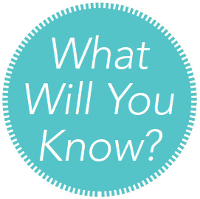Chapter Introduction
CHAPTER 3
The New Genetics
|

|

What Will You Know?

What is the relationship between genes and chromosomes? Each cell in the body contains 23 pairs of chromosomes. Chromosomes contain units of instructions called genes, with each gene located at a specific spot on a particular chromosome.
Is twinning genetic or can a person choose to have twins? Generally, twinning is genetic. However, there are some circumstances that increase the likelihood of having twins. For example, women who take fertility drugs, such as Clomid, are more likely than women who do not take fertility drugs to have twins. In addition, inserting multiple fertilized blastocysts into a woman increases the likelihood of having twins, as famously revealed in the case of Nadya Suleman.
How could a person have the gene for something that is never apparent? Almost every trait is polygenic (affected by many genes) and multifactorial (influenced by many factors). A zygote might have the alleles for becoming, say, a musical genius, but that potential may never be expressed. Accurate prediction of the phenotype is impossible, even if the genotype is entirely known. In addition, all important human characteristics are epigenetic; this applies also to diseases that are known to be inherited, such as cancer, schizophrenia, and autism. Type 2 diabetes is a notable example. People who inherit genes that put them at risk do not always become diabetic. However, lifestyle factors might activate that genetic risk. If that happens, epigenetic changes to the genes make diabetes irreversible: Diet and insulin may control the disease, but the pre–diabetic state never returns. Finally, every person is a carrier of recessive genes, carried on the genotype but not expressed in the phenotype. The crucial fact is that a recessive gene is carried, but not apparent, unless a child happens to inherit the same recessive gene from both parents.
If both parents have alcoholism, will their children have alcoholism, too? Genetic and cultural influences are “inexorably intertwined;” alcoholism has been shown to be the result of both nature and nurture. A genetic predisposition for alcoholism is not destiny because culture is a pivotal factor in determining alcohol use.
Why are some children born with Down syndrome? Down syndrome occurs when a person inherits three copies of chromosome 21.
|
-
Matching Genes and Chromosomes opposing perspectives: Too Many Boys?
-
From Genotype to Phenotype -
a case to study: Mickey Mantle
Chromosomal and Genetic Problems Genetic Counseling and Testing
|
“She needs a special school. She cannot come back next year,” Elissa’s middle school principal told us.
We were stunned. Apparently the school staff thought that our wonderful daughter, bright and bubbly (Martin called her “frothy”), was learning disabled. They had a label for it: “severely spatially disorganized.” We had noticed that she misplaced homework, got lost, left books at school, forgot where each class met on which day—but that seemed insignificant compared to her strengths in reading, analyzing, and friendship.
I knew the first lesson from genetics: Genes affect everything, not just physical appearance, intellect, and predisposition to specific diseases, so it dawned on me that Elissa had inherited our behavior patterns. Our desks were covered with papers; our home had assorted objects everywhere. If we needed masking tape, or working scissors, or silver candle sticks, we had to search in several places. Was that why we were unaware of Elissa’s failings?
The second lesson from genetics is that nurture always matters. My husband and I had both learned to compensate for innate organizational weaknesses. Since he often got lost, Martin did not hesitate to ask strangers for directions; since I was prone to mislaying important documents, I kept my students’ papers in clearly marked folders at my office. Despite our genes, we both were successful; we thought Elissa would be fine.
There is a third lesson. Whether or not a gene is expressed, that is, whether or not it actively affects a person, depends partly on the social context of that person’s life. We determined not to let Elissa’s genes impair her future. Because we now paid attention, we called our friends who gave us advice about how to help Elissa overcome her disability, including finding a professional tutor to teach spatial skills. Elissa began to list her homework assignments, check them off when done, put them carefully in her bag (not crumpled in the bottom), and then take her backpack to school.

The Moment of Conception This ovum is about to become a zygote. It has been penetrated by a single sperm, whose nucleus now lies next to the nucleus of the ovum. Soon, the two nuclei will fuse, bringing together about 20,000 genes to guide development.
We did our part: Martin attached her bus pass to her backpack; I wrote an impassioned letter telling the principal it would be unethical to expel her, we bought another set of textbooks so she would have one at school and one at home. The three of us also toured other schools—aware that we needed to heed her school’s principal, not simply disagree. Elissa understood that she might need a different school, so she studied diligently, hoping she would not need to leave her friends.
Success! Elissa aced her final exams, and the principal, somewhat reluctantly, allowed her to return. She became a good student all through high school and college, and is now a gifted strategist, a master organizer, an accomplished professional.
This chapter explains these three lessons. New scientific discoveries about genetics are published every day, leading to many ethical dilemmas and practical choices. I hope the implications of this chapter mean that you will never be stunned by what the school tells you about your middle-school child.



